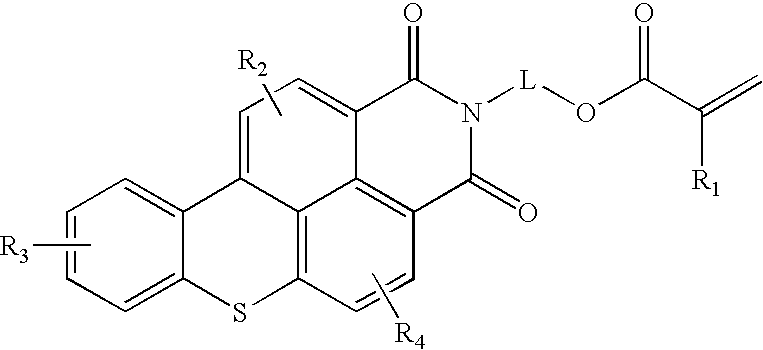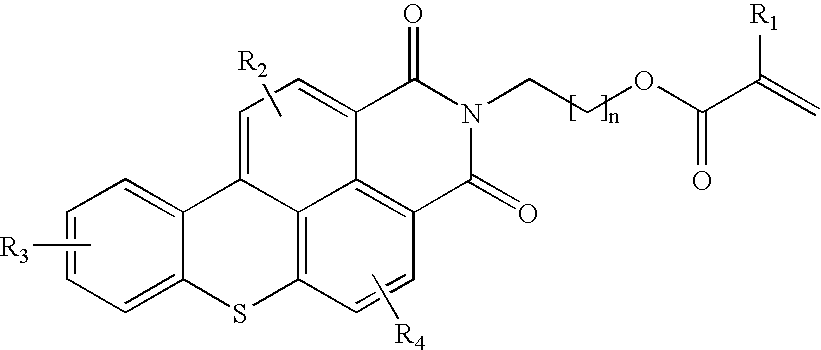Functional fluorescent dyes
- Summary
- Abstract
- Description
- Claims
- Application Information
AI Technical Summary
Benefits of technology
Problems solved by technology
Method used
Image
Examples
example 1
[0118]A 600 mL Parr reactor (available from Parr Instrument Co., Moline, Ill.) was charged with MeFBSEA (146.30 g; 0.36 moles), MeFBSEMA (10.03 g; 0.023 moles), BMA (3.34 g; 0.023 moles), LMA (5.85 g; 0.023 moles), MAA (1.67 g; 0.020 moles) and AD-1 (0.011 g). Upon dissolution of the charges, LUPEROX (9.24 g) and HFE-7100 (440.80 g) were added. The reactor was then sealed and degassed four times, by pulling a vacuum of 5-10 psig (34-68 kPa) and then purging with nitrogen. The reactor temperature was then elevated and held at 80° C. for about 24 hours. The resulting reaction mixture was filtered. The resulting filtered solution was used to coat substrates for testing.
PUM
| Property | Measurement | Unit |
|---|---|---|
| Fraction | aaaaa | aaaaa |
| Fraction | aaaaa | aaaaa |
| Volume | aaaaa | aaaaa |
Abstract
Description
Claims
Application Information
 Login to View More
Login to View More - R&D
- Intellectual Property
- Life Sciences
- Materials
- Tech Scout
- Unparalleled Data Quality
- Higher Quality Content
- 60% Fewer Hallucinations
Browse by: Latest US Patents, China's latest patents, Technical Efficacy Thesaurus, Application Domain, Technology Topic, Popular Technical Reports.
© 2025 PatSnap. All rights reserved.Legal|Privacy policy|Modern Slavery Act Transparency Statement|Sitemap|About US| Contact US: help@patsnap.com



